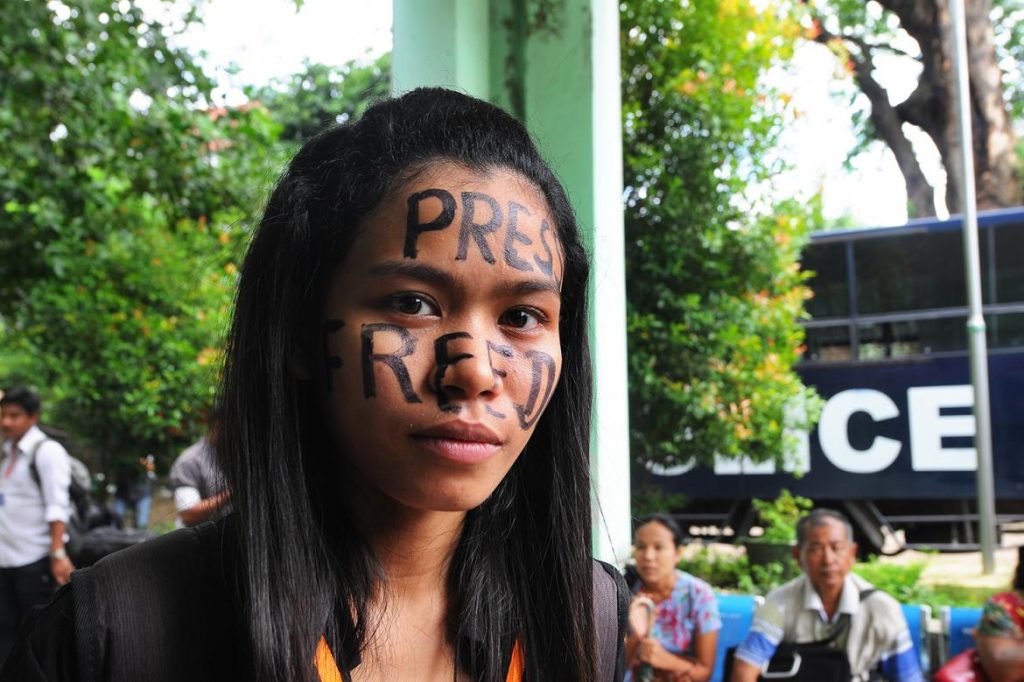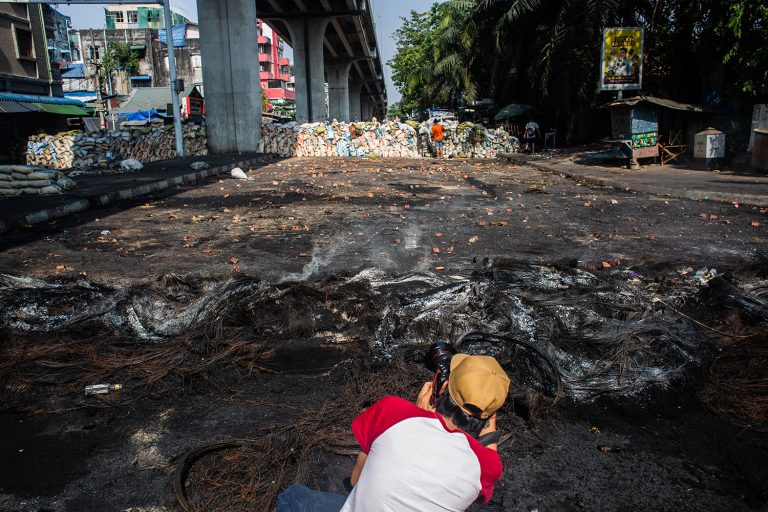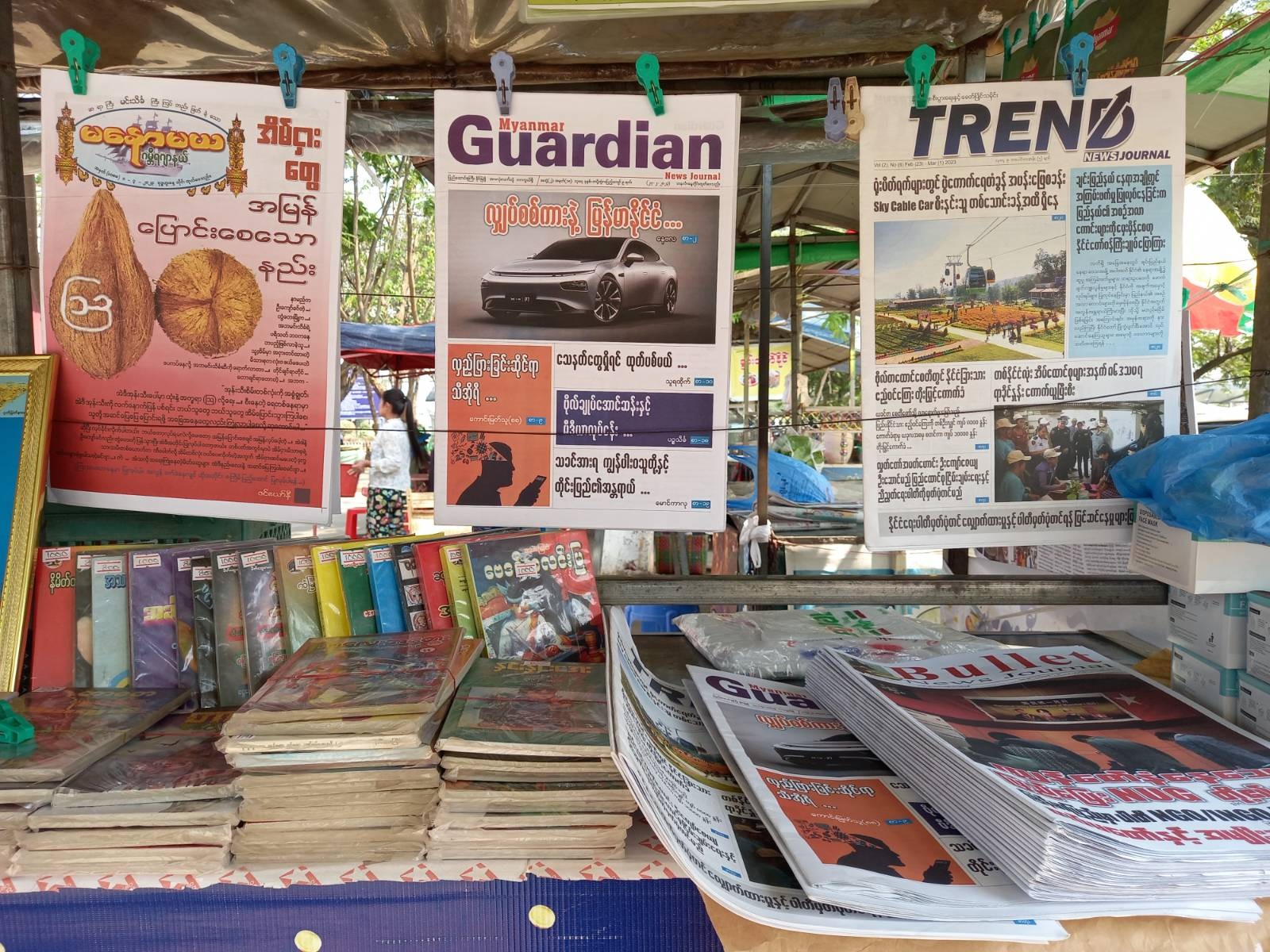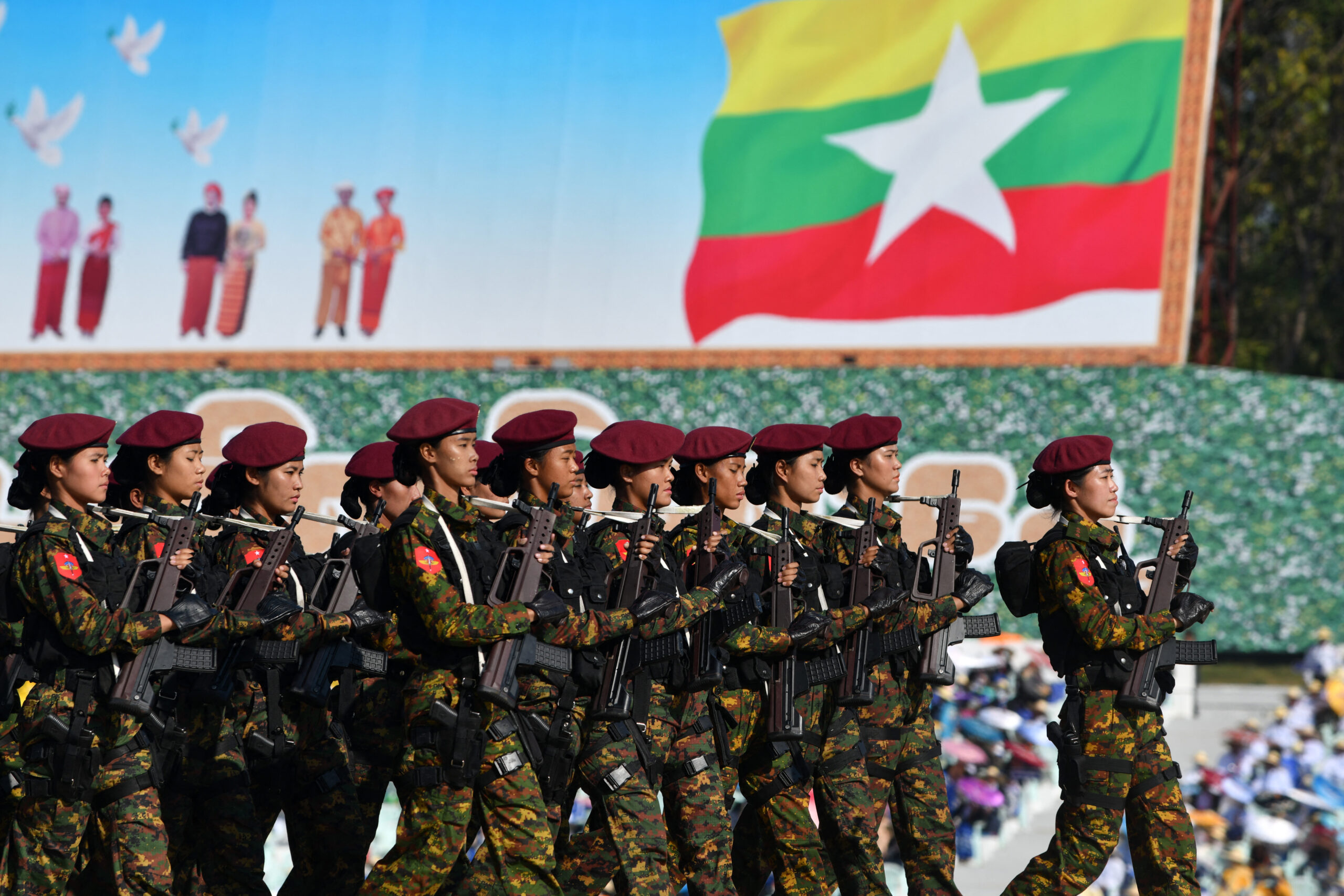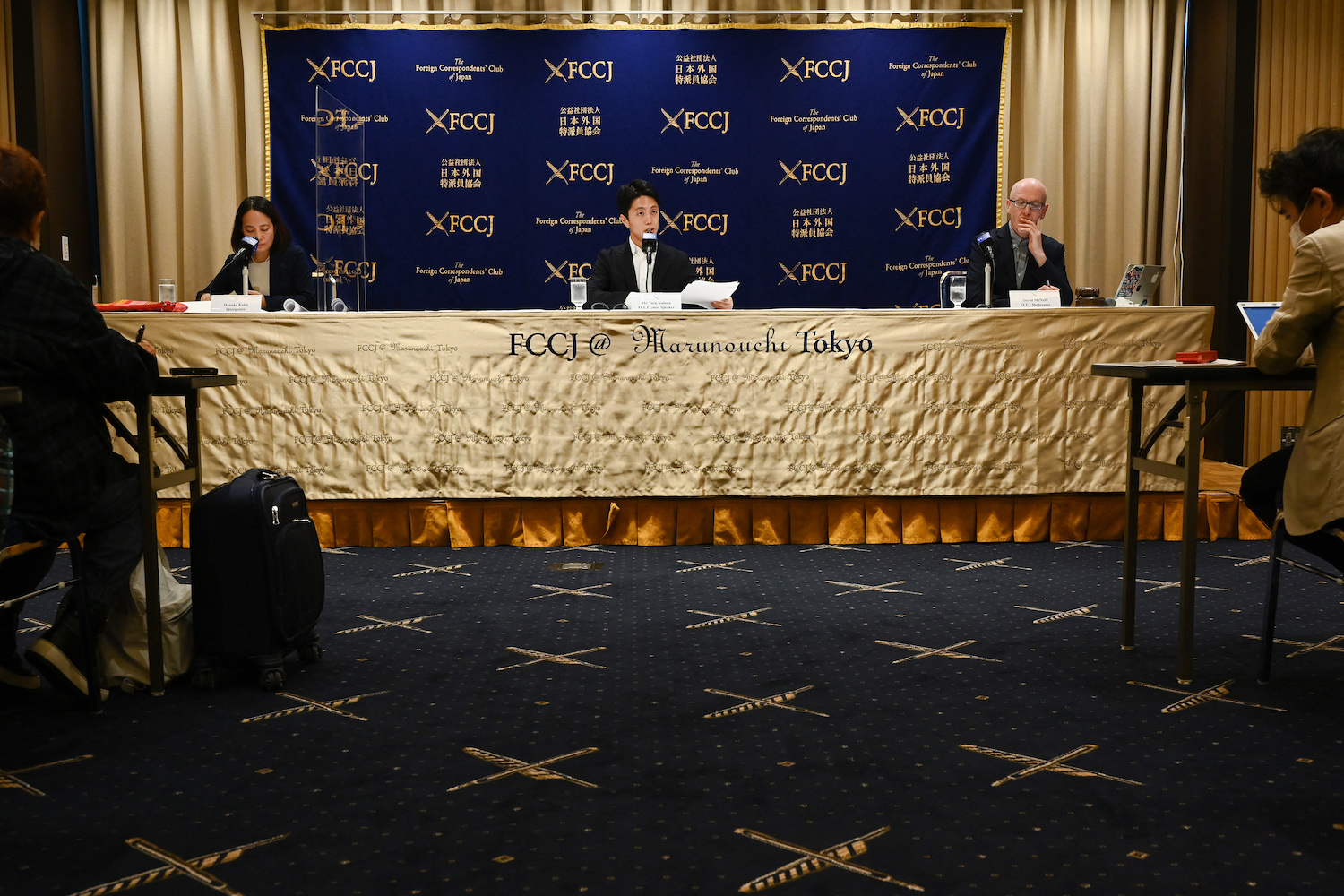Media outlets throughout the country are struggling with low revenues, the risk of legal harassment and subsidised competition in the form of state-owned dailies.
By OLIVER SLOW | FRONTIER
IN FEBRUARY, two reporters working for the Myitkyina News Journal were detained and allegedly assaulted by employees of a local firm after the publication of a critical story about the company’s activities. One of the journalists said a company official slapped her on the face with a copy of the journal.
A week earlier, the Dawei Township Court in Tanintharyi Region imposed a K500,000 fine on Ko Myo Aung, chief editor of The Tanintharyi Weekly, over a satirical article it published more than a year earlier. The offending article was viewed as an attack on former Tanintharyi chief minister Daw Lei Lei Maw, who has since been arrested on corruption charges.
Meanwhile, for more than 18 months Ko Swe Win, editor of Myanmar Now, has endured the expense and inconvenience of having to travel regularly from Yangon to Mandalay to attend a defamation trial related to his criticism of the ultranationalist monk U Wirathu. Reuters reporters Ko Wa Lone and Ko Kyaw Soe Oo languish in Yangon’s Insein Prison, where they are serving seven years for breaching the Official Secrets Act. They were arrested while investigating a massacre during the military crackdown in northern Rakhine State in late 2017.
Seven years after reforms began in 2012 that were lauded as a significant improvement for the country’s fourth estate, it is clear that press freedom in Myanmar is not in good health.
Support more independent journalism like this. Sign up to be a Frontier member.
The situation is particularly challenging for journalists and news outlets based outside big cities. The regular attacks and threats directed at them are rarely covered in the mainstream media.
Many of these “local” media organisations, which mostly report on events in their communities, were established after the reforms began and they continue to play a crucial role in keeping readers informed about developments in their area. For example, reporters from The Tanintharyi Weekly report regularly on environmental issues in their region, while staff at the Monywa Gazette in Sagaing Region played an important role in covering villagers’ protests against the Letpadaung Copper Mine, where police used white phosphorous grenades to disperse demonstrators in 2012.
As Myanmar heads towards a general election in 2020, these media outlets will play an even more important role in keeping the public informed about corruption, the environment, civil conflict, ethnic and religious tensions, and other topics of concern.
However, the outlets are operating in incredibly difficult circumstances, and face daily threats and other challenges.
For many journalists, the Reuters case has heightened fears that they could be arrested for doing their jobs. Broadly worded laws concerning defamation, state secrets and contact with “unlawful associations” are being used to intimidate journalists. “I worry about being arrested every day,” a journalist working in rural Myanmar told me recently. “Every time my phone rings, I panic.”
Local media outlets also face major financial difficulties. They rely on a variety of funding sources, including revenue from advertising and sales, donations from domestic and international individuals and organisations, and the personal savings of their owners. A recent survey of 55 local media outlets in Myanmar conducted by the Media Development Investment Fund found that only five relied on advertising and sales alone. Four outlets said they had no commercial revenue, a situation that highlights the lack of sustainability in the industry.
The reasons for the financial hardship vary and include limited readership and opportunities to sell advertising, as well as high distribution costs. As Myanmar becomes increasingly digitised, many outlets are altering their financial models accordingly. But, like many of their counterparts around the world, they are struggling to translate their online audiences into revenue.
One of the biggest challenges for the print media is competition from state-owned publications. When the National League for Democracy came to power in 2016, it surprised and disappointed many in the print media industry with its decision to maintain state-owned publications, which had been criticised for years as government mouthpieces.
The five dailies published by the government or the military have a big impact on the financial viability of privately run publications. Government subsidies mean the papers have low cover prices, helping create a large circulation that is more attractive to advertisers. State-run dailies also benefit from a superior printing and distribution network.
Based on August 2018 prices, the MDIF report found that all five state-owned or military-owned dailies sell for K100 a copy, while the prices for private publications were much higher, particularly for smaller outlets. State-owned Kyemon has the highest circulation of any daily, selling an estimated 220,000 copies, while its closest private-sector rivals, Standard Time Daily and the Burmese-language Myanmar Times Daily, sell about 40,000 each.
Nearly all of the media outlets operating in Myanmar have concerns about the future and some worry that they may have to close. Such a scenario would be a huge setback to their vital mission of keeping readers informed about developments in their community and throughout the country.


